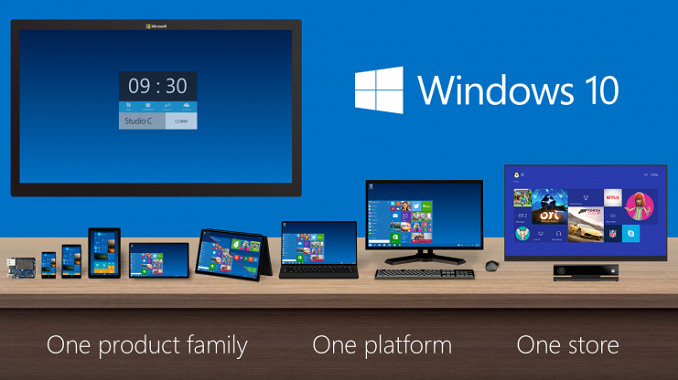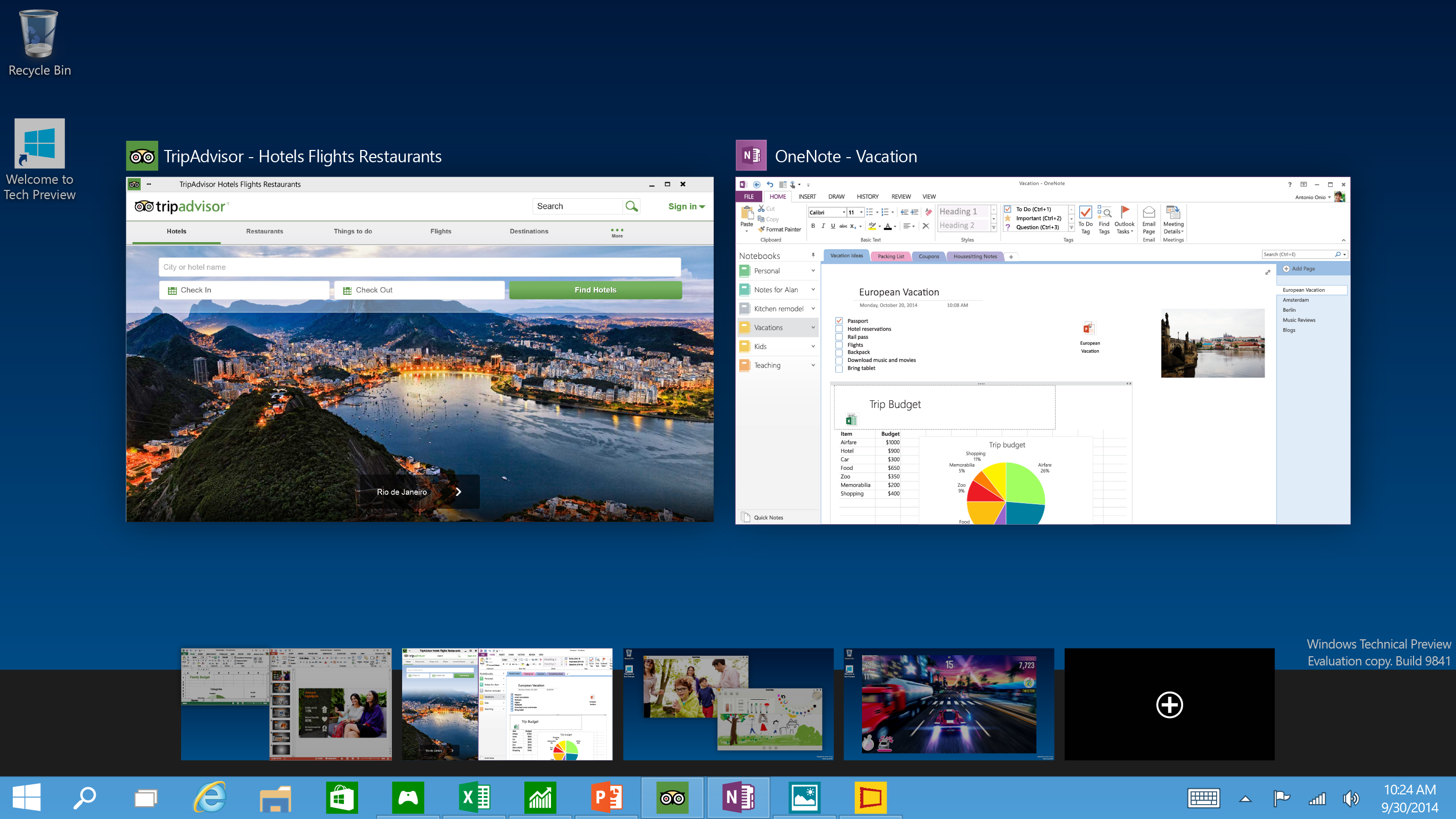
Original photo by RainingFlight updeted on server wikipedia.com
Basic information Windows 10
Windows 10 is an operating system realised by Microsoft and the first version of the Windows 10 entered a public β testing process in October 2014, leading up to its consumer release on July 29 in 2015
Windows 10 offers something as Microsoft described as a „universal“ application architecture; expanding on Metro-style apps, these apps can be designed to run across multiple Microsoft product families with nearly identical code—including PCs, tablets, smartphones, embedded systems, Xbox One(1). Microsoft philosophy for the future is to be as a platform for all (like Android or iOS), not only for the personal computers

Windows 10 for as many platforms as possible, photo by server cdn2.tekrevue.com
Comparisons with its earlier versions
The thought about the system that harmonizes the user experience (as same as the Windows 7) and design build on Metro (as similar as Windows 8) would be as a puzzle made from two different pictures, but it real works!
As some of you know Windows 10 will be a free upgrade for the first year only since release if you have Windows 7, Windows 8.1 or a Windows Phone 8.1 device (you will probably get a notification when it is ready to install new version of OS)
Does your computer meet or exceed the system requirements? Probably yes, because the system requirements are really low for those, who could run previous version of Microsoft (or latest versions of Ubuntu).
Windows 10 and its versions
Microsoft came up as obviously with many versions of Windows 10. It is available in seven versions, when two versions are for mobiles (Windows mobile which is a version that is designed for mobiles smaller than eight inches in size, o small tablets as well), one for playing console (Xbox One) and four for personal computers.
The key differences between versions designed for PC are security and management improvements. In summarize daily user probably don’t recognize the difference or it wouldn’t take any perceptible aspects on that.
For those who aren’t justified for Microsoft’s upgrade program, those who upgrade outside the first year free offer, those running a pirated version or those running a Windows operating system older than Windows 7 – Windows 10 Home will cost $119 (£78, AU$156) and Windows 10 Pro will cost $199 (£131, AU$262) per license(2).
Menu
You have still got the Start menu, even though it is rapidly changed (more on that shortly). Key functions are accessed from the taskbar. The design feels selected e.g. window borders are smaller.

Windows 10 Menu, photo by server cdn1.tekrevue.com
All the former Charms functions are contained in a new Notifications panel, called Action Center(3)

Windows 10 and its redesigned Action Centre, photo by windows10tipss.com
A raft of individual settings (called Quick Actions) resides at the bottom of the Centre. Most of these functions are standard to us from iOS and Android (features such as toggling Bluetooth, Wi-Fi or Location on and off, but it’s great to have).(4)
Pop-up notifications now appear in the below right. You will also notice that other features are available from this bar (ability to connect to devices such as Bluetooth speakers)
The Start menu is back and working the way you expect it to. Those live tiles from the Windows 8 home screen still exist4, but they have been attached to the Start menu, where they make a lot more sense. And the hidden Charms bar has been morphed into the more rational (and easier to find) Action Center(5).
Task view
There has always been task view since Windows 95 to switch between open apps. Windows 10 has also this function to cycle through apps. As earlier operating system had a keyboard shortcut to switch between apps (Tab plus Alt), Windows 10 has as a new icon on taskbar for it.
But the other thing that can Windows 10 do, that is a function of multiple desktops. This function is really good for “multi-tasking,” because switching between desktops is simple for those, who want to have certain applications on other desktops (or monitors)

Virtual desktops in Windows 10, photo by server www.cnet.com
Search and Cortana
Cortana, Microsoft’s virtual assistant, is now incorporated within Windows‘ Search and you can, of course, control it by voice. So you can ask Cortana to complete various tasks for you(6).
It finds your documents, it finds your folders and files. It has become quite brilliant. Windows 10 also offers to user option to open the site in default browser.
Cortana shows things such as weather, news and calendar appointments. This is within a section called Home.
Aero Snap
The ability to snap windows to the sides of your screen might seem a minor thing, but it’s something many Windows users do every day(7).
Windows 10 gives to users four-way AeroSnap. You can have four applications in each corner of your desktop.

Multitasking in Windows 10 as known as quadratsnap, photo by server digitaltrends.com
Security
Something that Windows 10 called “Windows Hello” means biometric security hardware will enable you to use a fingerprint, face scan or iris scan to log into Windows and apps, websites and networks.
Log into the system or applications is now easier and faster, although you cannot use it everywhere you want to.
Windows new operating system also has many other options for safety of your data. For example, you will be asked to set up a PIN (instead of your password).
Verdict
Now that Windows 10 is finished it’s clear to see that it’s a very usable and flexible operating system. Yet even when it was a much earlier work in progress, we knew it was going to be a good one(8).
The key idea behind Windows 10 is also sound: that it should be available on as many devices as possible.
Windows 10 is like meeting a great friend you once knew again.
Sources were servers: wikipedia.com, techradar.com, digitaltrends.com, core0.staticworld.net, www.cnet.com, windows10tipss.com
Special thnaks to the server techradar.com
